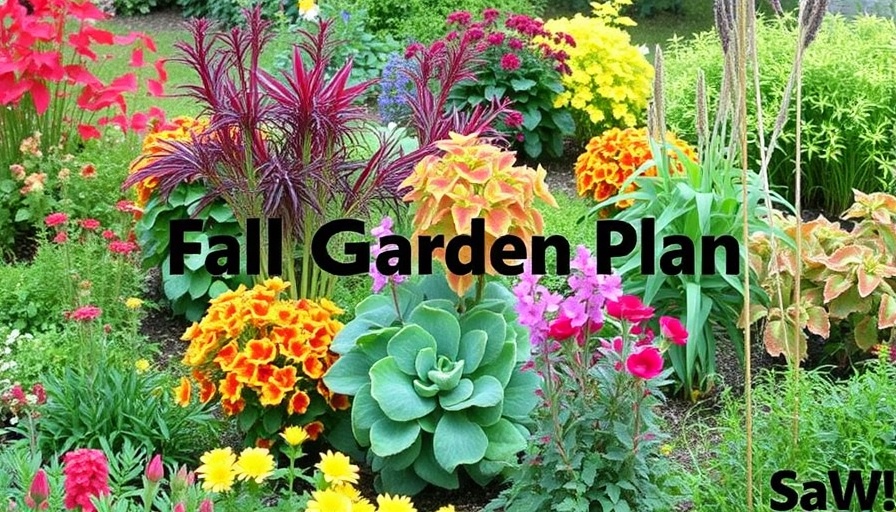
Why Fall Gardening is Essential for Urban Homesteaders
Many people understand spring and summer as the prime seasons for gardening, but fall offers a unique opportunity for urban homesteaders to reap benefits from their gardens. The cooler temperatures and often increased moisture can lead to a robust growing environment for various vegetables. This season is not just a transition; it's a chance to expand what can be harvested throughout the year, ensuring a fresher, more sustainable supply of food.
Choosing the Ideal Plants for Your Autumn Garden
To kick off a successful fall garden, start by selecting the right plants that thrive in autumn's cool embrace. Some of the most fruitful options include:
- Carrots: Robust in flavor, they get sweeter with frost.
- Kale: A nutritious powerhouse, kale’s leaves remain tender until deep winter.
- Brussels Sprouts: With a perfect sweet flavor after the first frost.
- Spinach: Hardy and nutrient-dense, perfect for salads or heating in dishes.
- Collard Greens: Ideal for stews or as side dishes, they can survive cold temperatures.
These plants not only survive well in fall temperatures but also provide ample nutrition, making them excellent choices for any fall garden plan.
Understanding Your Area: Essential Tips for Successful Fall Gardens
The geographical location heavily influences the success of your fall garden. Factors such as average frost dates and typical weather patterns should be your guiding principles. Knowing when to plant and when to harvest can streamline your garden's production. Based on regional climate data, urban homesteaders can customize their planting schedules and take advantage of the optimal planting windows.
Planning Your Garden Space Wisely
Designing a fall garden involves strategic placement of your crops. Take into account sunlight exposure, soil health, and drainage. Planting crops like carrots and beets can leverage the existing space of previously harvested summer vegetables. Vertical gardening techniques can also be used to maximize your yields in limited space while enhancing biodiversity in your urban setting.
Step-by-Step Tips for Early Seed Sowing
Starting seeds indoors can give you a head start before the cooler temperatures settle in. Use biodegradable pots to minimize transplant shock and ease planting. Consider using a grow light to boost early growth, ensuring seeds have enough light, warmth, and moisture while they establish.
Empowering Tips for Urban Gardeners
Establishing a fall garden plan not only adds variety to your personal diet but also helps in building community connections. Neighborhood seed-sharing programs and community gardens can empower urban dwellers, promoting sustainable practices and strengthening social ties. Collaboratively sharing resources encourages local ecosystems to thrive.
Common Misconceptions About Fall Gardening
Some believe that gardening is limited to spring and summer. This misconception can result in missed opportunities to cultivate and enjoy a diverse range of crops well into the cooler months. Urban gardeners can enhance their environments, contribute positively to local ecosystems, and enjoy bountiful harvests throughout the year!
 Add Row
Add Row  Add
Add 




Write A Comment